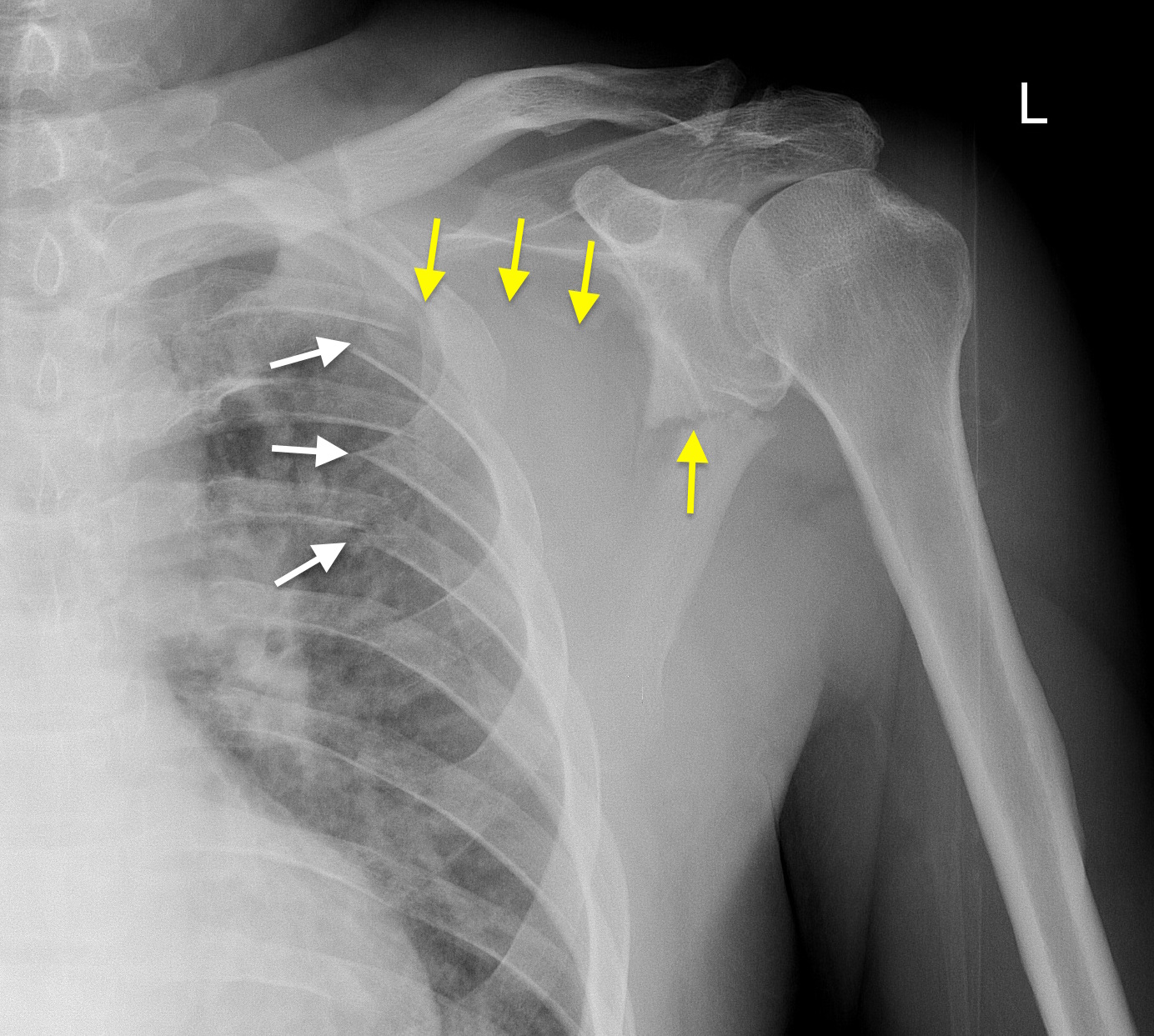

The third to eighth ribs are plated most often. Polymer cable cerclage is used to enhance plating of longitudinal fractures, rib fractures near the spine, osteoporotic ribs, and injuries of rib cartilage. For surgical stabilization of rib fractures, we currently prefer precontoured side and rib-specific plates with threaded holes and self-tapping locking screws. The muscle-sparing technique, splitting alongside fibers without transection, should be utilized if possible and supplemented by muscle retraction.

Posterior rib fractures are exposed through a vertical incision within the triangle of auscultation, and anterior fractures, through a transverse inframammary incision.
Displaced rib fracture skin#
A curvilinear skin incision is made overlying the fractured ribs. A lateral approach is considered to be the main surgical approach because it allows access to the majority of rib fractures. We favor performing video-assisted thoracoscopy if possible to control bleeding, evacuate hematomas, repair a lung, and perform cryoablation of the intercostal nerves.

Single-lung intubation is preferred if there is no severe contralateral pulmonary contusion. The incision is selected depending on the fracture location, and the surgical technique is chosen relevant to the type of fracture. For surgical stabilization of rib fractures, we classify rib fractures by location, type of fracture, and degree of displacement after obtaining thin-sliced chest computed tomography (CT) scans. Surgical stabilization should be considered in cases of multiple bicortically displaced rib fractures, especially in those with a flail chest and/or a concomitant ipsilateral displaced midshaft clavicular fracture or sternal fracture, as such cases may result in thoracic wall instability. Recently, the utilization of surgical stabilization of rib fractures has increased considerably because the procedure has shown improved outcomes 3-5. Traditionally, the majority of patient with rib fractures have been managed nonoperatively. Rib fractures are a common thoracic injury that is encountered in 20% to 39% of patients with blunt chest trauma and is associated with substantial morbidity and mortality 1,2.


 0 kommentar(er)
0 kommentar(er)
